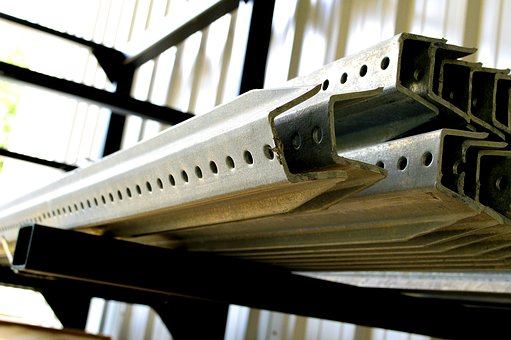In its raw form, iron ore is found in an impure form. It has many additives that make it useless for practical purposes. Before it can be used, it has to be treated in a process that makes it pure. Once the iron has been extracted, either it can be sold in its raw form or it can be further processed. One of the further processing options is fabrication. Iron is often given to a fabricator for further sue. Iron can also be sold in its raw form. This avoided the need for any further processing. This also saves the costs associated with fabricating and conversion. However, there is a downside to this approach. Unrefined iron or steel sells at a very low rate. By converting iron into steel and fabricating it, the price can be increased. This is a good step for people looking to make a profit out of selling processed steel.

To convert iron into steel, it is converted into mixed with other elements. The most common additive is carbon. In its raw form, carbon is a black powder. Iron in its raw form is grey in colour. Adding carbon to iron converts it into steel. Steel is malleable and a fabricator can process it further. It is also ductile. These properties make it suitable for a process like steel fabrication Melbourne. As the name suggests, fabrication involves treating iron like sheets of fabric.
Fabric has the property that it can be changed into other shaped by cutting and other processes. Iron can also be fabricated. When iron is made into steel, its fabrication potential increases significantly. Steel is five to ten times more likely than iron to be fabricated. This is because steel is more elastic and can be bent without being broken. Many fabricators find steel to be the ideal. Steel has many other physical properties that make it ideal for a process such as fabrication. Not many materials can survive a tough and rigorous process like fabrication. Most metals wilt under pressure when they are fabricated. Steel is an exception as it is exceptionally strong and often does not break under pressure.
The art of fabricating steel is an old one. It dates back many centuries. Fabricators of steel make it very usable. It makes steel a value added product. A value added product fetches a higher price than a raw or unrefined product. Fabrication takes a lot of time. The time taken in fabrication also depends on the quality of iron. Good quality steel can be fabricated in five to ten minutes, at most. Low quality steel takes much longer. Low quality steel takes five to ten times longer to fabricate and even then, the quality of the finished product is compromised. Browse this website to find out more details.